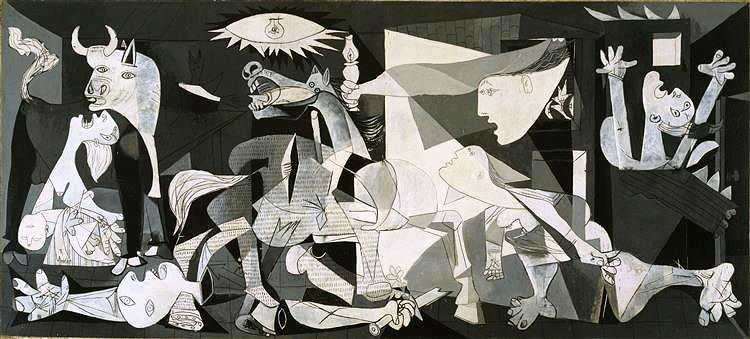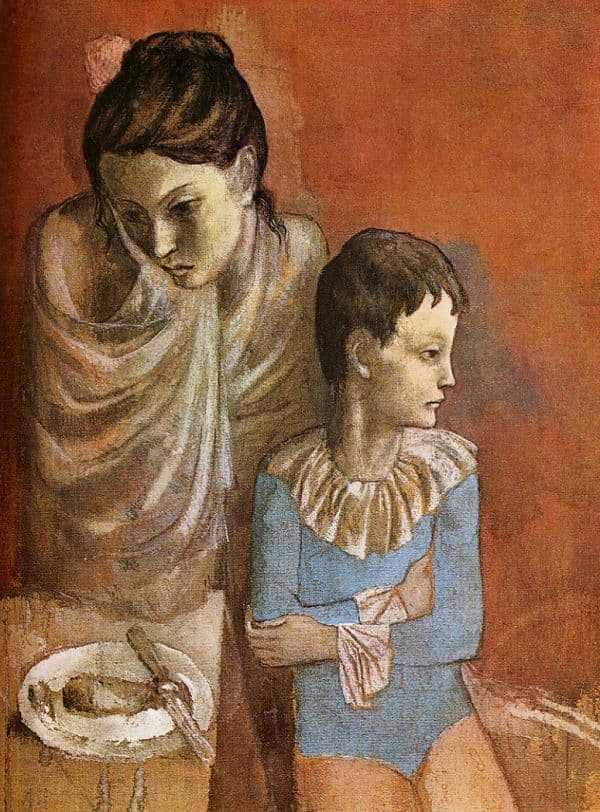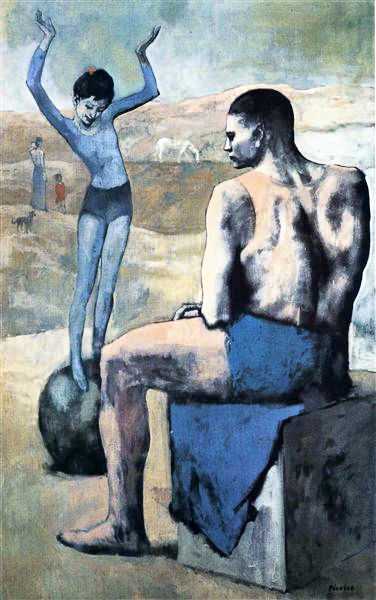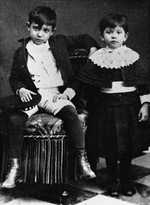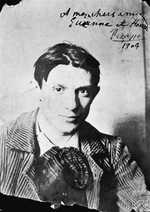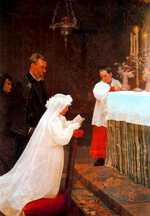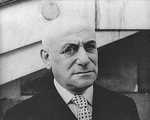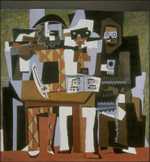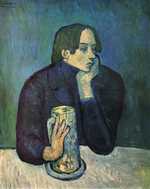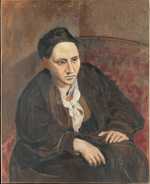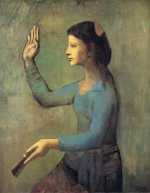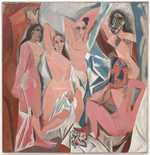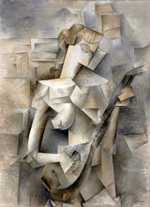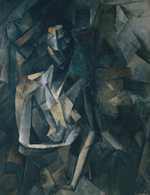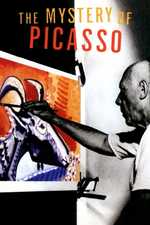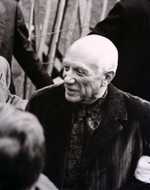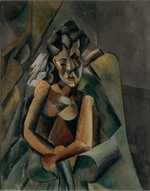1. Early Life
25 October 1881: Picasso is born in the city of Málaga, Andalusia, in southern Spain to Don José Ruiz y Blasco and María Picasso y López, from a middle-class family. His father, a naturalist painter of birds and other small animals, is also an art professor at the School of Crafts and the curator of a local museum. His family tree follows a line of minor aristocrats.
1888: Picasso, aged 7, is trained by his father Jose in oil painting and figure drawing.
1890: Nine year old Picasso produces his first known work of art, titled 'Le Picador' (showing a small bullfighter dressed in yellow).
1891: The whole family moves to A Coruña when Jose finds a job at the School of Fine Arts, where they stay for almost four years.
2. Early Training
1895: Picasso is devastated when his little sister Conchita dies of diphtheria, and the family moves to Barcelona soon after. In Barcelona, he gains admittance to the prestigious School of Fine Arts through his father’s influence. He clears the exams and is only 13 when the jury admits him to the school.
The move to Barcelona is good for Picasso. He thrives in that city and falls in with a group of nonconformist artists and intellectuals who frequently gather at El Quatre Gats Cafe. This helps him to develop his radical style of expression through art.
1896: Picasso paints his first Realist paintings, The First Communion - which is large-sized and features his sister Lola - and the Portrait of Aunt Pepa, which is a stark and dramatic piece that one critic called “without a doubt one of the greatest in the whole history of Spanish painting.”
1897: Picasso is sent to Madrid and enrolled in its Real Academia de Bellas Artes de San Fernando, the most prestigious art school in the country. He is 16 when he sets off on his own. However, he does not enjoy the rigid education and stops taking classes, choosing instead to wander the town and paint whatever appeals to his gaze.
Madrid is fascinating to Picasso. He visits the Prado museum and explores art by Spanish masters such as Goya, Velázquez, and Zurbarán. He is a big fan of El Greco and his particular style of portraits featuring loose long limbs and vibrant colors, an influence which can be seen in Picasso’s later works.
Around 1897, Picasso’s realism starts adopting a tinge of symbolism such as in his series of purple and green landscapes. This period is soon followed by what is named his modernist period, in which he borrows from artists such as Toulouse-Lautrec, Rossetti, Steinlen, and Edvard Munch
1900: Picasso holds his first exhibition in Barcelona and in the autumn goes to Paris for the first time. He meets Max Jacob who becomes his good friend and guide and helps him learn the language and the customs. They live together in an apartment where Picasso paints at night while Max sleeps. These are days of great poverty, with Picasso sometimes burning his paintings to keep warm.
1901: In the early months of 1901, Picasso returns to Madrid, and in a joint venture with his friend Francisco de Asís Soler, creates their magazine Arte Joven (Young Art). The first issue is published on 31 March 1901. They succeed in publishing five issues overall. Picasso is responsible for the illustrations while Soler provides the written content.
3. The Blue Period
Characterized by works oozing with melancholy and anguish, Picasso’s blue period paintings are known for their cool palette of greens and blues.
The subjects of these paintings are equally depressing and doleful, often including beggars and prostitutes. It is said that Picasso was deeply affected by the suicide of his friend Carles Casagemas and painted several paintings of him. During this period (from about 1900 to 1904), he traveled frequently, splitting time between Madrid, Paris, and Barcelona.
1901: The beginning of Picasso’s blue period, after his Spanish friend Casagemas kills himself on 17th February 1901 in Paris over the rejection of his love by Germaine Gargallo, whom he’d met for the first time in October 1900.
1903: Picasso paints The Old Guitarist in 1903. Other paintings include La Vie, The Blindman's Meal, and The Portrait of Celestina.
1904: Picasso creates his famous etching, The Frugal Repast, depicting a woman and a blind man, sitting at an empty table and weak from starvation.
4. The Rose Period
The Rose Period is a drastic change from the blue period. Encompassing shades of pinks and oranges, his work becomes optimistic and lively.
The subjects reflect the change too, focusing this time on performers and acrobats, and harlequins (called saltimbanques). The uplifting paintings are an echo of Picasso’s style before the blue period and are reflective of his warm relationship with Fernande Olivier.
1904: Picasso meets Olivier at Bateau-Lavoir and they move in together by 1905. Olivier is a model and the inspiration behind many of Picasso’s Rose period paintings. They both have stormy natures and their tempestuous affair lasts 7 years.
1905: Picasso gains the patronage of Leo and Gertrude Stein, and later on of Michael and Sarah Stein. Picasso paints Gertrude’s portrait, and she has a considerable collection of his work at home. It is through gatherings at her house that Picasso meets Henri Matisse, the future fauvist with whom he would have a friendly rivalry.
1906: Picasso meets Georges Braques and the two form a friendship characterized by competition and companionship. Picasso’s forms take on more definition, his palette gets darker and he begins his gradual journey towards the development of cubism.
1907: Picasso joins Daniel-Henry Kahnweiler’s gallery. Kahnweiler is a German art collector and a supporter of Picasso and Braque as well as of other contemporary artists from Montparnasse including André Derain, Juan Gris, Kees van Dongen, Fernand Léger, and Maurice de Vlaminck.
5. Cubism
Picasso stumbled upon cubism, for which he is best known, alongside Braque. Art historians like to divide his cubism phase into two: analytic and synthetic cubism, although Picasso himself rejected these labels.
He saw his work as an ever-shifting continuum. For Picasso, art was all about experimenting and evolving.
June 1907: Picasso visits the ethnographic museum at Palais du Trocadéro and ends up being dazzled with African artefacts - an influence seen in Les Demoiselles d'Avignon. He paints Nude with Raised Arms, an example of his evolving cubism style.
1909: Picasso’s analytic cubism period is characterized by a focus on simplifying objects and analysing them over their basic shapes, and the color selection is limited to earth and neutral tones.
1909: Picasso finishes painting Les Demoiselles d'Avignon, a bold artwork inspired by Iberian sculptures, consisting of sharp lines and geometric shapes and considered to be a precursor of the cubism movement. It is a shocking painting showcasing five prostitutes with harsh and unflinching poses, a far cry from the deified female nudes that the art world is accustomed to seeing. Henri Matisse is particularly enraged. He sees Picasso’s work as a mockery of his work, Le Bonheur de Vivre, and brushes it off as a hoax.
Picasso and Braque are inseparable and work together in tandem, feeding off of one another’s ideas. They create the cubist technique of tearing apart and reuniting objects in abstraction, with an intense focus on basic forms, and presenting the image from multiple perspectives mixed in one painting. Some paintings from this time are ‘Girl with Mandolin,’ ‘Three Women,’ and ‘Bread and Fruit Dish on a Table.’
1912: There is a marked shift in Picasso’s work as he uses the techniques of papiers colles that he has picked up from Braque and starts employing motifs and shapes to hint at objects. This is called the Synthetic phase of cubism.
1915: Picasso is devastated at the death of Eva Gouel (also called Marcelle Humbert), with whom he’d fallen in love in 1911. World War I has broken out by this stage, and although Picasso does not join the fighting, his palette is somber, reflective of the events of this time.
1916: Picasso publicly displays Les Demoiselles. Around this time he is becoming interested in ballet. Through Jean Cocteau, a filmmaker, he is introduced to Sergei Diaghilev and designs sets for his Ballets Russes; this is where he meets Olga Khoklova, a ballet dancer in Diaghilev’s troupe.
1917: While working on designing the set of the ballet Parade, Picasso visits Rome, Naples, and Pompeii in 1917 which apparently influence him to work in a classical style - a brief period of neoclassicism follows in the wake of the first world war.
1918: Olga leaves ballet and moves to Paris with Picasso. They are married on July 12th.
1921: Picasso and Olga’s son, Paulo, is born on February 4th. But their marriage has already started to fall apart. Picasso begins his affair with Marie-Therese Walter, a 17 year old girl who is almost 30 years his junior.
1925: Picasso shows his work at the first surrealist group show. The term surrealism is coined by Apollinaire in 1917 but they only became an organized art circle after two years. Picasso is not the initiator; he is approached by the group and asked to present with them.
1928: Picasso and Spanish sculptor Julio Gonzalez collaborate to create a series of welded iron sculptures.
1930: The Museum of Modern Art opens in New York and its first exhibition displays 15 works by Picasso.
1935: Picasso’s first daughter with Maries-Therese, named Maya, is born in Paris on September 5th. A few months after her birth he is introduced to the photographer and artist Dora Maar by the poet Paul Éluard, and begins his affair with her.
1937: Painted in 1937, Guernica is an example of Picasso’s work from the Surrealism period. This is the time when Picasso takes a deep interest in politics and paints Guernica in response to the bombing of the towm of Basque in the Spanish civil war. Guernica is Picasso’s best known work and is one of our Top 10 Paintings of All Time.
1943: The 62 year old Picasso meets Françoise Gilot, a 22 year old art student. The two spend 11 years together and have two children, Claude and Paloma. All this while he is still married to Olga (he did not divorce her to avoid the division of his assets).
6. Late Years and Death
1950: Picasso is awarded the International Stalin Peace Prize by the USSR.
1953: Picasso’s affair with Françoise Gilot comes to an end when she walks out on him. Picasso meets Jacqueline Roque (his final muse) at the Madoura Pottery where he creates his ceramics.
1955: Olga dies, leaving Picasso free of his financial bond to her.
1956: Picasso records a short documentary film with French director Henri-Georges Clouzot in which he creates a drawing on paper which is recorded through stop-action and time-lapse photography. It is called Le Mystère Picasso.
1961: Picasso and Jacquline Roque marry following her divorce. They live peacefully together for the last 11 years of his life in a castle in the French Riviera called Château de Vauvenargues.
Picasso is once again awarded the International Stalin Peace Prize, now called the International Lenin Peace Prize.
1968: Picasso shifts direction and tries his hand at etching and engraving, inspired in particular by Rembrandt. In 1968 he made an impressive collection of prints - about 350 prints in seven months.
1973: He died of a heart attack in the South of France in 1973, in Château de Vauvenargues, Aix-en-Provence.
7. The Legacy of Pablo Picasso
1973: A postage stamp is made in honor of the Spanish painter in the Soviet Union.
2015: On 14th May, Picasso's “Women of Algiers” sells at auction for $179,365,000 in New York.
2016: One of his early cubist works Femme Assis, which was in a private collection, sells for $63.4 million at a Sotheby’s London evening sale.

